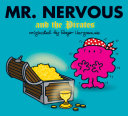Treasure Island
Lisa Norby
វិច្ឆិកា 2010 · Random House Books for Young Readers
4.7star
ការវាយតម្លៃ 16report
សៀវភៅអេឡិចត្រូនិច
96
ទំព័រ
family_home
មានសិទ្ធិ
info
reportការវាយតម្លៃ និងមតិវាយតម្លៃមិនត្រូវបានផ្ទៀងផ្ទាត់ទេ ស្វែងយល់បន្ថែម
អំពីសៀវភៅអេឡិចត្រូនិកនេះ
Masterfully crafted, Treasure Island is a stunning yarn of piracy on the fiery tropic seas—an unforgettable tale of treachery that embroils a host of legendary swashbucklers from honest young Jim Hawkins to sinister, two-timing Israel Hands to evil incarnate, blind Pew. But above all, Treasure Island is a complex study of good and evil, as embodied by that hero-villain, Long John Silver; the merry unscrupulous buccaneer-rogue whose greedy lust for gold cannot help but win the heart of every one who ever longed for romance, treasure, and adventure.
Since its publication in 1883, Treasure Island has provided an enduring literary model for such eminent writers as Anthony Hope, Graham Greene, and Jorge Luis Borges. As David Daiches wrote: “Robert Louis Stevenson transformed the Victorian boys’ adventure into a classic of its kind.”
Since its publication in 1883, Treasure Island has provided an enduring literary model for such eminent writers as Anthony Hope, Graham Greene, and Jorge Luis Borges. As David Daiches wrote: “Robert Louis Stevenson transformed the Victorian boys’ adventure into a classic of its kind.”
ការដាក់ផ្កាយ និងមតិវាយតម្លៃ
4.7
ការវាយតម្លៃ 16
អំពីអ្នកនិពន្ធ
Throughout his life, Robert Louis Balfour Stevenson was tormented by poor health. Yet despite frequent physical collapses–mainly due to constant respiratory illness–he was an indefatigable writer of novels, poems, essays, letters, travel books, and children’s books. He was born on November 13, 1850, in Edinburgh, of a prosperous family of lighthouse engineers. Though he was expected to enter the family profession, he studied instead for the Scottish bar. By the time he was called to the bar, however, he had already begun writing seriously, and he never actually practiced law. In 1880, against his family’s wishes, he married an American divorcée, Fanny Vandegrift Osbourne, who was ten years his senior; but the family was soon reconciled to the match, and the marriage proved a happy one.All his life Stevenson traveled–often in a desperate quest for health. He and Fanny, having married in California and spent their honeymoon by an abandoned silver mine, traveled back to Scotland, then to Switzerland, to the South of France, to the American Adirondacks, and finally to the south of France, to the South Seas. As a novelist he was intrigued with the genius of place: Treasure Island (1883) began as a map to amuse a boy. Indeed, all his works reveal a profound sense of landscape and atmosphere: Kidnapped (1886); The Strange Case of Dr. Jekyll and Mr. Hyde (1886); The Master of Ballantrae (1889).In 1889 Stevenson’s deteriorating health exiled him to the tropics, and he settled in Samoa, where he was given patriarchal status by the natives. His health improved, yet he remained homesick for Scotland, and it was to the “cold old huddle of grey hills” of the Lowlands that he returned in his last, unfinished masterpiece, Weir of Hermiston (1896).Stevenson dies suddenly on December 3, 1894, not of the long-feared tuberculosis, but of a cerebral hemorrhage. The kindly author of Jekyll and Hyde went down to the cellar to fetch a bottle of his favorite burgundy, uncorked it in the kitchen, abruptly cried out to his wife, “What’s the matter with me, what is this strangeness, has my face changed?”–and fell to the floor. The brilliant storyteller and master of transformations had been struck down at forty-four, at the height of his creative powers.
វាយតម្លៃសៀវភៅអេឡិចត្រូនិកនេះ
ប្រាប់យើងអំពីការយល់ឃើញរបស់អ្នក។
អានព័ត៌មាន
ទូរសព្ទឆ្លាតវៃ និងថេប្លេត
ដំឡើងកម្មវិធី Google Play Books សម្រាប់ Android និង iPad/iPhone ។ វាធ្វើសមកាលកម្មដោយស្វ័យប្រវត្តិជាមួយគណនីរបស់អ្នក និងអនុញ្ញាតឱ្យអ្នកអានពេលមានអ៊ីនធឺណិត ឬគ្មានអ៊ីនធឺណិតនៅគ្រប់ទីកន្លែង។
កុំព្យូទ័រយួរដៃ និងកុំព្យូទ័រ
អ្នកអាចស្ដាប់សៀវភៅជាសំឡេងដែលបានទិញនៅក្នុង Google Play ដោយប្រើកម្មវិធីរុករកតាមអ៊ីនធឺណិតក្នុងកុំព្យូទ័ររបស់អ្នក។
eReaders និងឧបករណ៍ផ្សេងទៀត
ដើម្បីអាននៅលើឧបករណ៍ e-ink ដូចជាឧបករណ៍អានសៀវភៅអេឡិចត្រូនិក Kobo អ្នកនឹងត្រូវទាញយកឯកសារ ហើយផ្ទេរវាទៅឧបករណ៍របស់អ្នក។ សូមអនុវត្តតាមការណែនាំលម្អិតរបស់មជ្ឈមណ្ឌលជំនួយ ដើម្បីផ្ទេរឯកសារទៅឧបករណ៍អានសៀវភៅអេឡិចត្រូនិកដែលស្គាល់។





